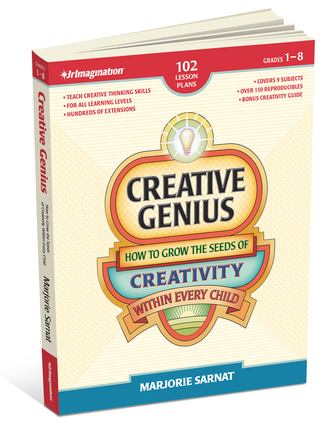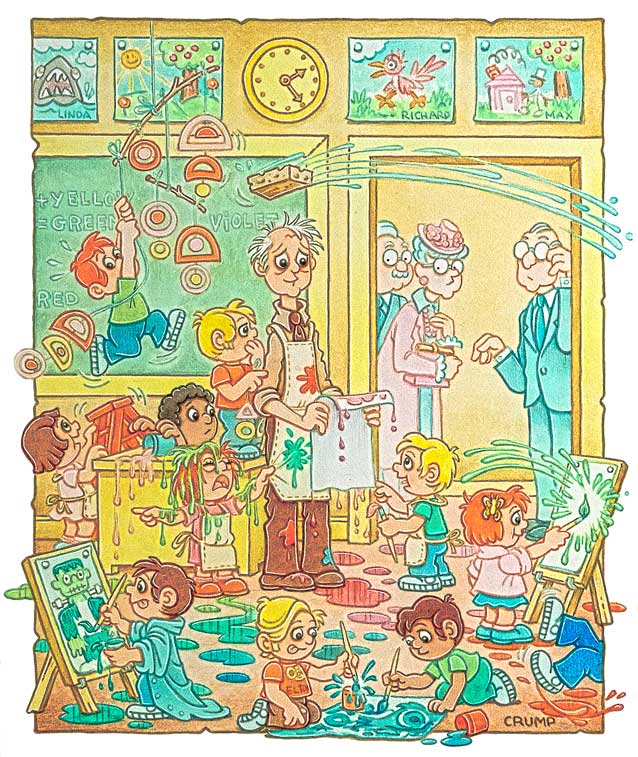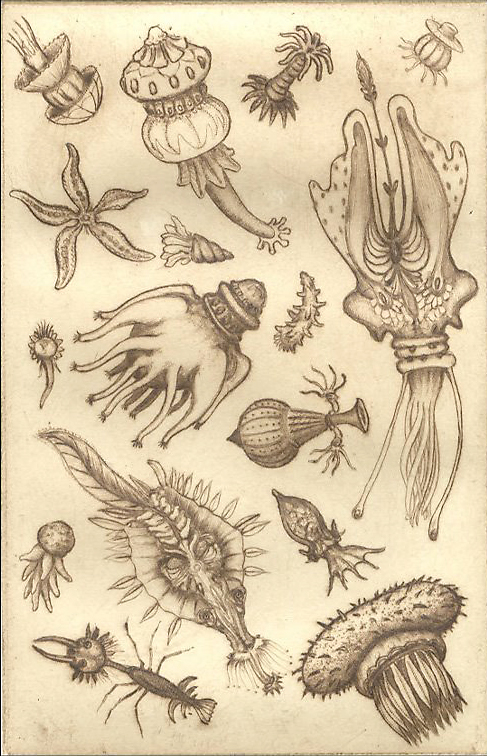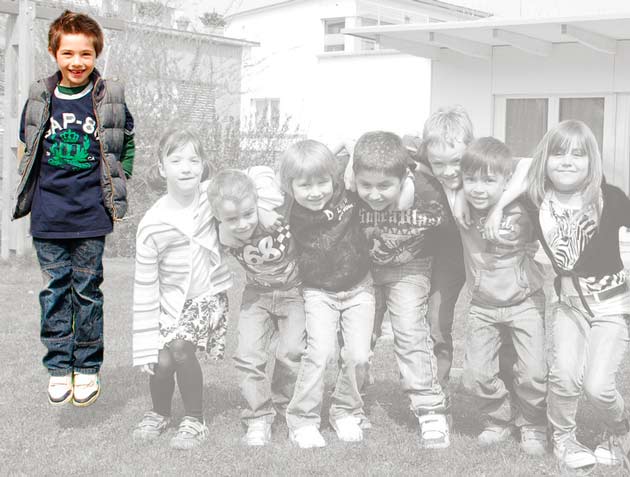Coloring Books for Kids and Adults: How They Can Support Creativity
 Friday, September 11, 2015 at 2:37PM |
Friday, September 11, 2015 at 2:37PM |  Marjorie Sarnat
Marjorie Sarnat 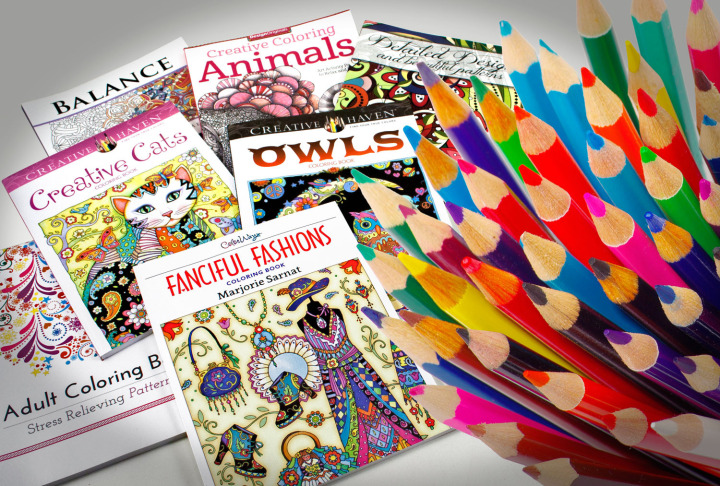
Coloring books are all over the news these days, including my own Creative Cats and Owls, which I illustrated for Dover Publications’ imprint, Creative Haven. The experience of relaxation and stress reduction while coloring is confirmed by what so many colorists express and in the opinion of many professionals. But how does coloring relate to the creative process?
Is Coloring Creative?
Educators often frown upon coloring books for kids as thwarting creative development (1). And lately there have been blog posts asserting the limitations of coloring books for adults (2). I believe coloring books have very much to offer. Here are my thoughts:
- The activity of coloring is calming and promotes focused thought. While this benefit is not a creative thought process per se, focus is essential for bringing ideas to fruition. A child may spout imaginative ideas, but in order to put an idea into expression through an art form, invention, story, or song, requires a calm focus to see it through. When kids can turn ideas into an accomplishment, their confidence soars, and they’re more likely to become involved in additional creative activities.
- The activity of coloring helps develop fine motor skills. Excellent motor skills support hands-on creative endeavors.
- Coloring in a coloring book is not creating fully “original art,” but it can be a way to appreciate art, or advance into the arts. Viewing paintings in an art museum is not the same experience as actually painting, but masterful artworks provide insight and inspiration for painting. A reviewer of Creative Cats Coloring Book said it this way:
“I am using it [Creative Cats] for rewards in my elementary classroom. Coloring encourages decision-making, neatness, pride in work, and attention to detail. I am an ARTIST today because my parents encouraged me to color. I don't think of it as “play” because it takes skill and creativity. The mind remembers shapes and lines, so carried into the future, coloring creates artists.”
– Faith Page, Amazon Review, July 26, 2015
Learning from Experience
Coloring books that are imaginative and well done are masterful in their own right and can elevate colorists' understanding of drawing and design. Artists can use that enrichment to bring to their original works. Colorists learn about color itself through consistently making color choices and applying that knowledge in their daily lives. Home decor, clothes shopping, photography, and teaching are only a few examples.
As a child I was crazy about paper dolls. I collected them and observed the way the clothes were designed and the way the figures were painted. I learned a lot from professional paper doll artists and applied that knowledge to the original paper doll sets I would make to give as birthday gifts.
As an adult, I continue to learn from the works of accomplished professionals, both commercial and fine artists, and apply my knowledge in my own work. Recently I illustrated a new coloring book, Fanciful Fashions, which, in part, grew out of my experiences with paper dolls.
Creative Exercises
Because kids and grownups love coloring books, together they can use them as a springboard for creative exercises. Here are some ways:
- Try new coloring techniques, such as dotting, striping, swirling, etc. within the outlines. What new techniques can you or your child invent? Perhaps it's ideal to draw your own pictures first before exploring, but sometimes we just need a quick and easy way to test new ideas and materials. In this way, coloring books support creativity.
- Use unexpected colors. For example, make the sky yellow, the cat blue, and foliage red and white. Surreal effects will emerge.
- Try new materials for coloring, such as gel pens or watercolors. Try combining techniques and materials, too. I love layering colored pencil over marker color. How about filling the outlines with rubber stamp designs, stenciled designs, or gluing torn paper within the outlines?
- Color outside the lines. Challenge yourself or your child to try it! It's fun to see how the final pieces turn out. They often have an expressionistic, contemporary feel.
- Make collages. I have a friend who colors the pages, then cuts them into geometric shapes and collages the pieces onto heavy paper. If she had to draw pictures first, she might never have time to finish a collage. Not every artist loves to draw.
- Limit the palette. Exercise fluency and stretch visual awareness by using at least eight shades of any given color. This works especially well with paints that can be mixed, but pencils can be layered to create new shades of a color, too.
- Try various color schemes, such as using autumn colors for one page, or birthday cake colors for another, or analogous colors (next to each other on the color wheel) for the next one.
- Color me twice. Make a copy of a page and challenge yourself or your child to color the same design two different ways. Then notice the differences between the two. What colors look good together? Why do some colors pop off the page and others don’t? What do the color looks remind you of? This is a good exercise for critical thinking (observing and explaining) as well as creative thinking (finding new ways.)
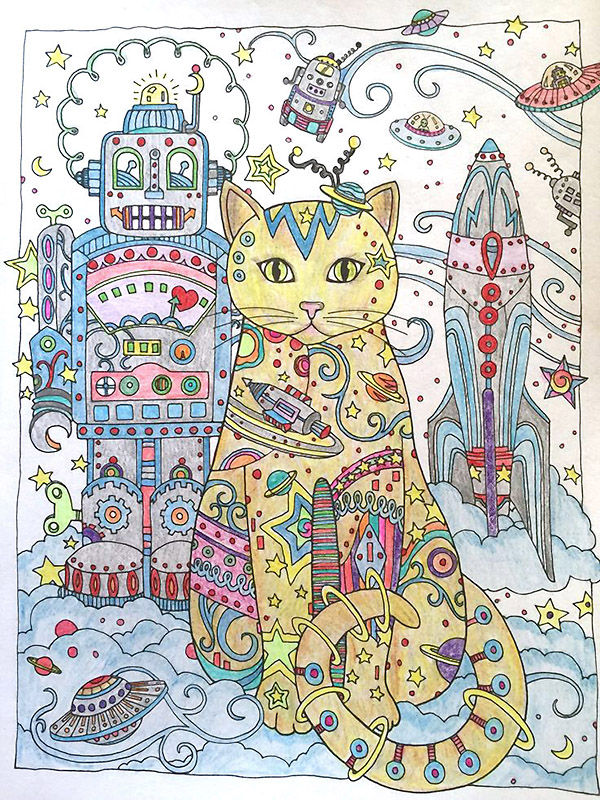 Here is a palette that displays a soft and subtle look. (Image courtesy of Debra Maupin ©2015)
Here is a palette that displays a soft and subtle look. (Image courtesy of Debra Maupin ©2015)
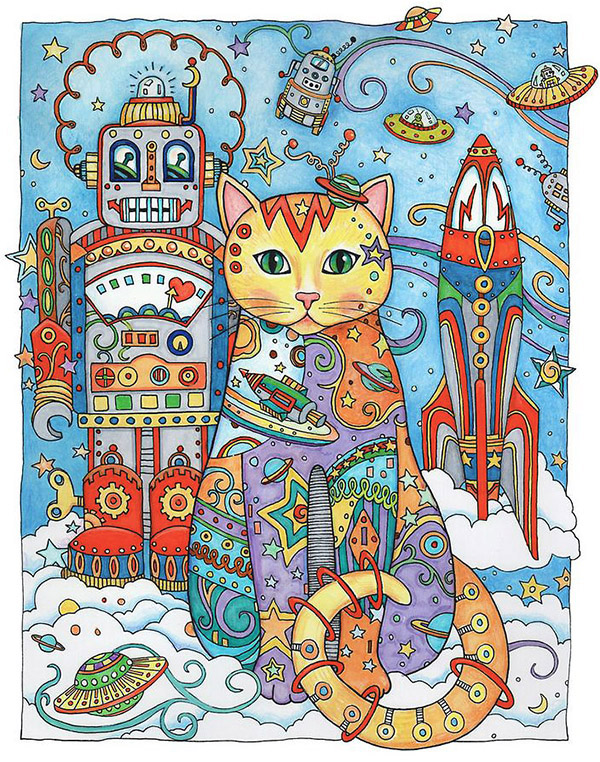 Rich and vibrant colors echo a look of 1950s toys. Image ©Marjorie Sarnat from Creative Cats Coloring Book.
Rich and vibrant colors echo a look of 1950s toys. Image ©Marjorie Sarnat from Creative Cats Coloring Book.
Coloring books are not a substitute for making fully original art, but they can play an important role for supporting many aspects of creativity.
What are your experiences with coloring and creativity?
Marjorie Sarnat has taught art on the elementary, high school, and adult level. She has maintained a lifelong passion about creative thinking and the creative process. Marjorie received her Certificate of Training for “Putting Ideas into Action” from the International Center for Studies in Creativity from Buffalo State University, N.Y. and has written two books on creativity, including the acclaimed, Creative Genius: How to Grow the Seeds of Creativity Within Every Child. and Creativity Unhinged: 120 Games for Kids to Spark Creative Thinking.
(1) Susan Striker author page on Amazon
(2) Innercanvas blog post

